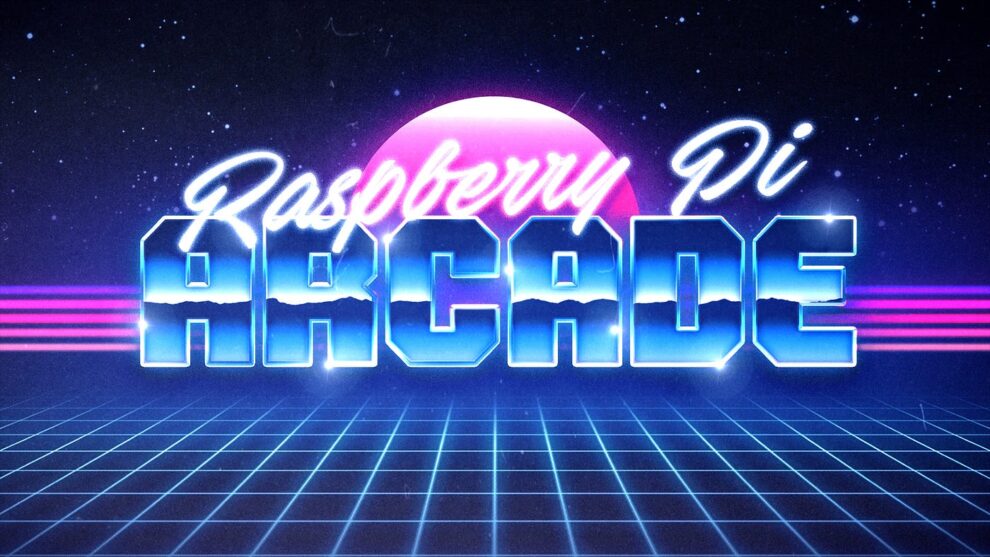Do you miss the glory days of arcade gaming? With flashing lights, endless quarters, and rooms full of cabinets with the latest and greatest games? Thanks to the Raspberry Pi, you can relive those nostalgic moments by building your own retro arcade machine right at home. And you can do it all for around $100!
Why Build Your Own Retro Arcade Machine?
Constructing your own arcade cabinet allows you to customize the experience exactly to your preferences. Add your favorite classic games, craft a unique design, and tweak settings to your heart’s content.
Building a Raspberry Pi arcade machine yourself also opens the doors to a fun new DIY hobby. As you research, design, and assemble the components, you’ll pick up useful skills like:
- Basic woodworking and crafting abilities
- Electrical wiring and soldering know-how
- Software configuration with RetroPie OS
- Troubleshooting abilities
And of course, you’ll end up with a cool retro arcade machine to call your own, to play your favorite 8-bit and 16-bit classics from the NES, SNES, Genesis, and more.
Raspberry Pi Arcade Machine Parts List
Here are the essential components you’ll need to build your Raspberry Pi arcade cabinet project:

Raspberry Pi
The Raspberry Pi acts as the brains of your DIY arcade machine. Any Raspberry Pi will work, but models with more CPU power and RAM help emulate games more smoothly. Consider the Raspberry Pi 3B+ or Raspberry Pi 4 with 2+ GB RAM.
SD Card
To store the RetroPie software and ROM game files, use a 16GB+ microSD card. Some models include NOOBS preinstalled to simplify setup.
Power Supply
A 5 volt, 2.5+ amp micro USB power supply provides ample stable power for peak performance.
HDMI Cable
Use an HDMI cable to connect the Pi to your display screen.
Controllers
Relive arcade glory with authentic joysticks and buttons. Or save money by repurposing parts from old gamepads.
Display
Any HDMI compatible screen works, but for nostalgia, find an old 4:3 CRT television or arcade video monitor.
Operating System
RetroPie offers a fantastic operating system tailored for Raspberry Pi retro gaming. It includes dozens of emulators and visual themes.
ROM Game Files
Legally obtain game ROM files from your own purchased cartridges or seek permissions for including titles in your arcade.
Building Options for Your Pi Arcade Cabinet
When constructing the physical cabinet to house your electronics, three options stand out for simplicity, customization and cost-effectiveness:
Shoebox Design
Use cardboard shoeboxes as building blocks by gluing several together in creative shapes. Decorate the boxes with paint, decals or posters for unique flair.
Cardboard Cabinet
For a more advanced DIY challenge, design and construct the entire arcade cabinet body out of cardboard pieces. Cut holes to tightly fit your monitor and controllers.
Repurposed Furniture
Breathe new life into an old dresser, TV stand or table by retrofitting it into an arcade cabinet. This saves money while retaining nostalgic design elements.
Building Your Raspberry Pi Arcade Step-by-Step
Follow these steps to start building your own retro arcade machine powered by the Raspberry Pi:
Step 1: Set Up Raspberry Pi
Install RetroPie OS on your Raspberry Pi’s SD card. Boot it up to customize settings before mounting inside your arcade. Tweak to enable your desired emulators and get controllers working.
Step 2: Construct Cabinet
Build the physical cabinet to house the Pi, display and controls. Make openings for wiring and ventilation. Consider adding internal shelves to mount components cleanly.
Step 3: Add Electronics
Mount the Raspberry Pi, display screen and other internals like speakers or amplifiers using secure braces. Ensure all is wired safely and positioned optimally for space and cooling.
Step 4: Install Controls
Attach your joysticks, buttons and other controls securely to the cabinet exterior. Print labels that match your RetroPie controller mappings for intuitive play.
Step 5: Personalize Design
Make the cabinet your own with custom artwork, paint jobs, LED lighting or other decorative craft touches. Print marquees and bezels for games selection screens.
Going Above and Beyond
Once your starter arcade is built, possibilities abound for enhancements like:
- Add a coin slot and ticket dispenser
- Install extra controls for two-player gaming
- Connect Bluetooth controllers for wireless convenience
- Add rumble motors to joysticks for immersive feedback
- Hook up PC lighting strips or neon signs for flair
- Emulate advanced 3D games with a GPU upgrade
Build an Epic DIY Arcade on a Budget
Constructing your own Raspberry Pi retro arcade machine makes for a fun, rewarding hobby that relives childhood memories. And you can make it all happen for $100 or less!
As you research designs, wire up electronics, craft cabinetry and add personal touches, you gain useful new maker skills. And the end result is a cool, nostalgic gaming paradise to call your own.
So grab your soldering iron, fire up the Pi, and start building the arcade of your 8-bit dreams today!
















Add Comment